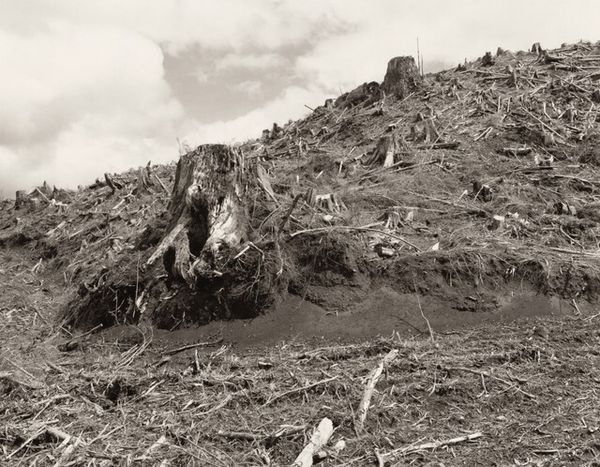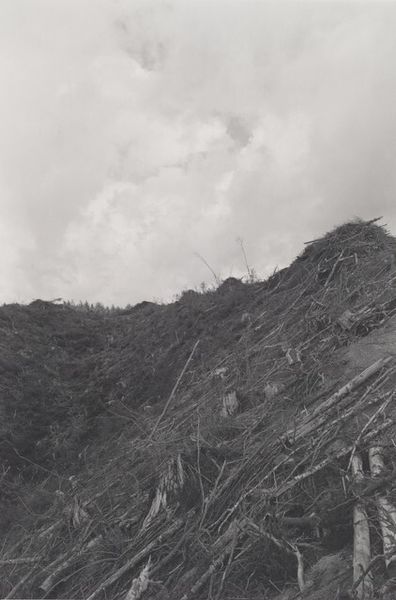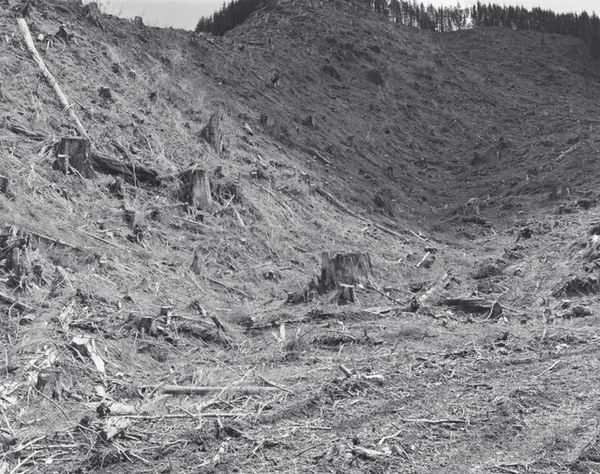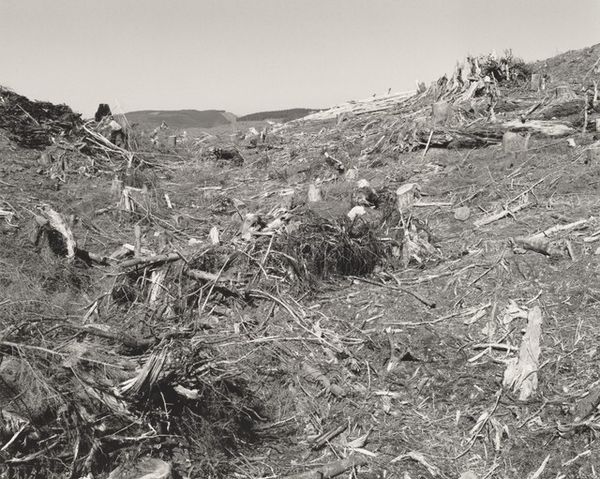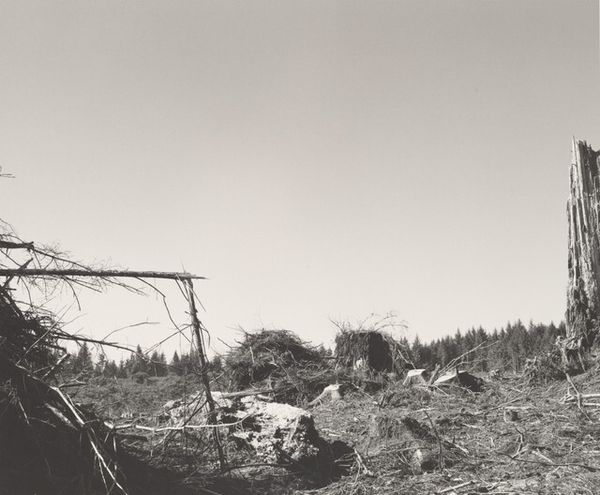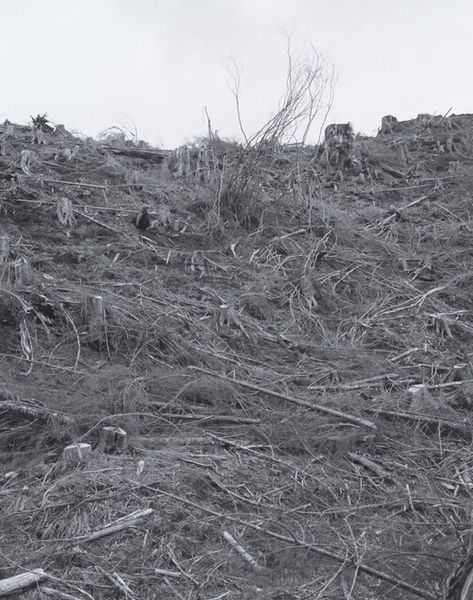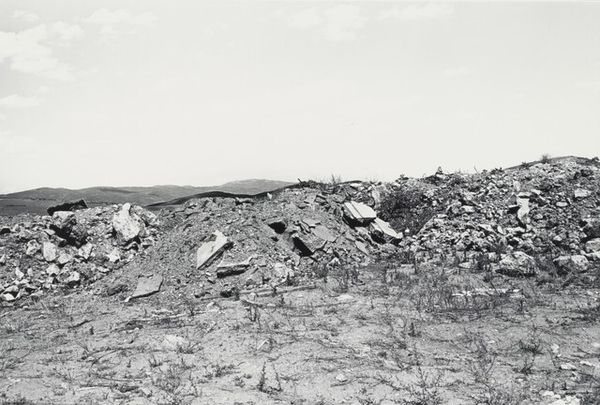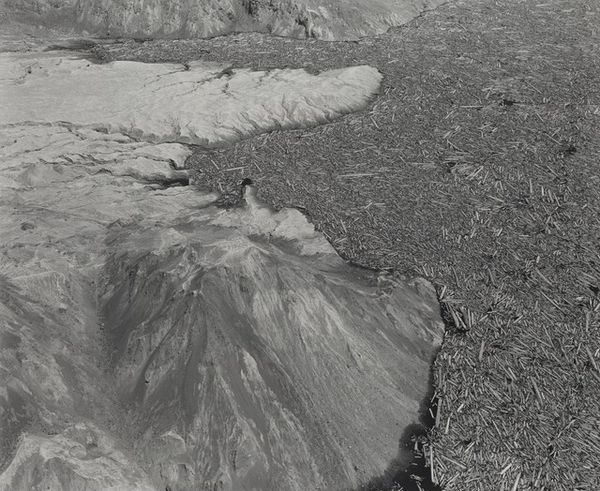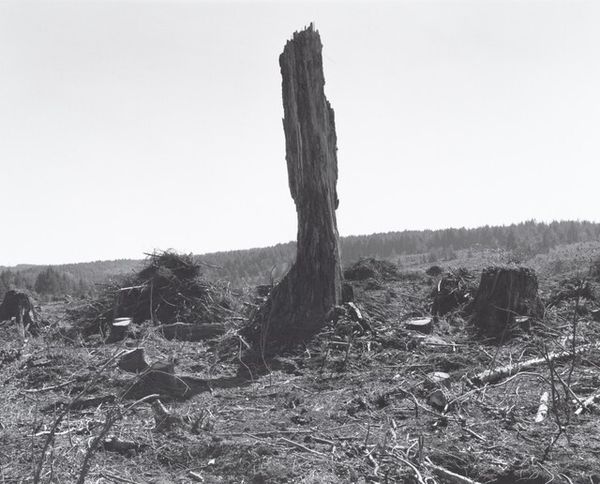
photography, gelatin-silver-print
#
conceptual-art
#
black and white photography
#
countryside
#
postmodernism
#
appropriation
#
landscape
#
rural
#
black and white format
#
rugged
#
photography
#
environmental-art
#
black and white
#
gelatin-silver-print
#
monochrome photography
#
gloomy
#
monochrome
#
monochrome
#
shadow overcast
Dimensions: image: 18.8 × 22.9 cm (7 3/8 × 9 in.) sheet: 20.32 × 25.4 cm (8 × 10 in.)
Copyright: National Gallery of Art: CC0 1.0
Curator: Immediately, I'm struck by the overwhelming feeling of entropy. Editor: That’s interesting. This gelatin silver print, possibly created between 1982 and 1985, is titled “San Quentin Point, no. 18” by Lewis Baltz. Curator: It's a powerful title when considering what it shows. There’s an immense, rugged rock face looming over what appears to be a pile of debris – shattered wood, broken metal. Editor: The composition is undeniably stark. The contrast between the monumental rock and the disordered waste is almost brutal in its simplicity. Baltz has this tendency towards capturing deconstructed space; his gaze seems unwavering in confronting what we’d prefer to ignore. Curator: Right, ruins. The symbolism resonates deeply, I think, precisely because it withholds any explicit narrative. What sort of narrative might lie around the visual juxtaposition of rock and refuse, with implications of prisons, too? I see in the fragmented structures metaphors for societal decay and maybe, on a personal level, of shattered beliefs. Editor: The lack of human presence is, of course, crucial. These stark juxtapositions that are almost brutal offer the composition's emotional weight entirely. The texture captured is almost geological; it emphasizes layers, and invites the viewer to see meaning where structures decompose over extended time. Curator: Do you think the framing, placing the wreckage so prominently in the foreground, contributes to this sense of alienation? There’s no softening here, no picturesque softening or artistic license. Editor: Precisely. Baltz has made a choice to avoid that sense. The visual elements all suggest desolation; maybe not hopelessness, but something close. This landscape makes me think about the relationship of prisons to notions of isolation and marginalization as something central to American consciousness. Curator: It seems Baltz is not concerned with providing answers. Instead, the image seems designed to activate this cultural anxiety. Well, this photographic essay is proving much more engaging. Editor: Yes, Baltz offers an enduring work that confronts themes of entropy and structures by not flinching.
Comments
No comments
Be the first to comment and join the conversation on the ultimate creative platform.
